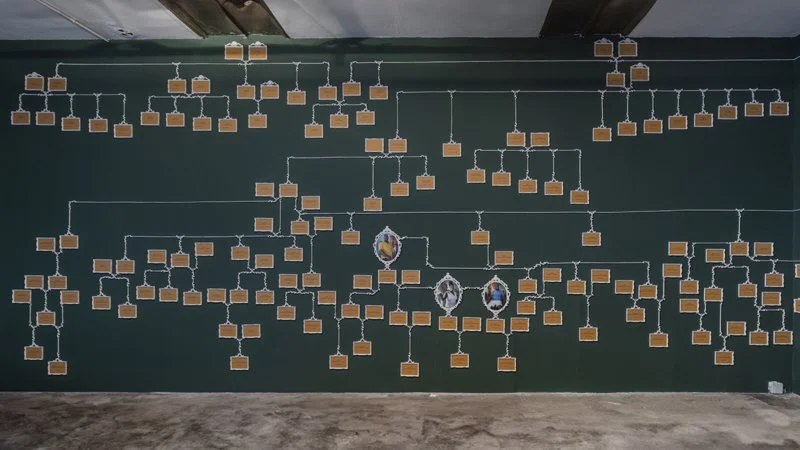Cristiano Berti’s ‘Boggiano Heirs’ Unearths the Pains of Afro Cuban Slavery During Italy’s Pro-slavery Era
Cristiano Berti , Photo by Piero Ottaviano
Cristiano Berti’s “Boggiano Heirs” uncovers the untold history behind the surname Boggiano in 19th-century Cuba. Boggiano which is a common last name in the Afro Cuban community today comes with a history all too familiar. The book is an artist’s book written in the form of a historical essay and explores Italy’s pro-slavery era.
“Boggiano Heirs” tells the story of a wealthy Italian merchant named Antonio Boggiano, who settled in Cuba in the early 19th century during a time when many Latin American communities were colonized by Spain. Boggiano purchased a coffee plantation in an area named San José de los Puriales near the bustling city of Trinidad, which was known as a trading hub for sugar and enslaved peoples. The plantation came with hundreds of enslaved Afro Cubans who cultivated the land.
“... Boggiano’s decision to invest in coffee came from the fact that he could not afford to buy larger land suitable for sugar.”
The enslaved population in 19th-century Cuba was subject to poor living conditions and inhumane treatment. Berti coined ingenios, a name for sugar plantations that were particularly known for their harsh living conditions. Plantations often had hundreds of slaves, forcing them into large barracks with poor sanitary conditions that exposed them to various epidemics.
[Additional Read: British Colonialism: Museum of London Docklands Curates an Exhibit Dedicated to Indo Caribbean Culture]
While coffee plantations, such as the one owned by Boggiano had slightly better conditions, those in captivity were inevitably subject to subpar living conditions. At one point, 16 Afro Cubans who labored on Boggiano’s coffee plantations were killed by the spread of cholera.
“Within these places, men outnumbered the women, and even when the women were present, those subjected to that rigor saw no reason to bring children into the world, condemning them to the same sufferance.”
To escape slavery, some sought their freedom through suicide, believing they would return to their homeland as spirits. Those who attempted to flee were known as cimarrones and were often captured and returned to slavery after being brutally punished. The book delves into the customary practices of Spanish America where the only way to freedom was through its purchase.
“Just like other Trinidadian hacendados (owners of rural estates), Boggiano complained about having to go all the way to the capital to identify his own cimarrones.”
Though Boggiano had many businesses and properties, his legacy is not particularly interesting compared to the book’s exploration of the transmission of his surname prevalent in the Afro Cuban community today. Art critic Seph Rodney describes Berti’s work as having “... a hushed history of entrepreneurship, travel, exploitation, enslavement, aspiration, intermixing of cultures and ethnicities, and laborious self-possession.” The book is representative of history across the West Indies. Last names taken from slave masters like Boggiano are still common across Caribbean households today—a reminder of a history we cannot forget.
Berti speaking with Afro Cuban families, Photo by Piero Ottaviano
While the book acknowledges the history of exploitation, enslavement and cultural intermixing, Berti also describes the story of the Boggianos as one of fighting for freedom from slavery. Berti points out that the highlight of his research was finding escribanos or books of the notaries that preserved the deeds of Boggiano’s slaves who purchased their freedom.
The book is a result of Berti’s five years of historical research. "Boggiano Heirs” is part of a larger project titled “Futile Cycles: Boggiano” which includes two other works developed by the author. The first is a wall installation depicting two large family trees and a video that weaves together stories collected in the area where Boggiano’s coffee plantation was. The second are conversations between a family of Afro Cuban Boggianos. The video was screened at the National Museum of Fine Arts in Havana, Cuba in March 2023. The installation will be available to the public in 2024.
Due to its historical and artistic relevance at an international level, the book gained the support of the Italian Council program operated by the Italian Contemporary Creativity Directorate General of the Ministry of Culture, which aims to promote the production, knowledge and dissemination of contemporary Italian creation in the field of visual arts.
To purchase “Boggiano Heirs” click here.
Update
Since this publication Berti has created and exhibited one of the two Cuban Boggianos family tree. It is the tree of the “Descendants of Rosa, Francisco and Liberata Boggiano.” The tree is a complex of frames which contains photographs and paper material and has connecting elements in enameled resin.
The installation is 3.5 meters high and over 17 meters wide and is currently on display until the end of September at Guido Costa Project, a contemporary art gallery located in Turin, Italy.
“Descendants of Rosa, Francisco and Liberata Boggiano” at Guido Cost Project, photo courtesy of Cristiano Berti







